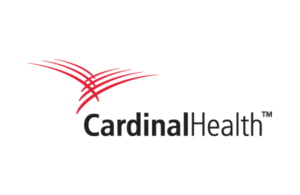 Cardinal Health (NYSE: CAH) today reported first-quarter results that beat the consensus forecast on Wall Street, sticking by its full-year EPS guidance.
Cardinal Health (NYSE: CAH) today reported first-quarter results that beat the consensus forecast on Wall Street, sticking by its full-year EPS guidance.
The Dublin, Ohio–based pharma and medtech giant earned $110 million, or 40¢ per share, off $49.6 billion in revenue for the quarter ended Sept. 30, 2022. The bottom line was less than half what it was during last year’s Q1, while revenue was up 13%.
Adjusted to exclude one-time items, Cardinal Health saw EPS of $1.20. The adjusted EPS was 26¢ ahead of The Street, where analysts expected EPS of 94¢ on revenue of $48.19 billion.
Profits were up 6% on revenue growth of 15% for the Pharmaceutical segment. Growth drivers included branded pharmaceutical sales growth from existing and net new Pharmaceutical Distribution and Specialty customers.
However, the Medical segment swung to a loss on a 9% sales decline. Cardinal Health said the Medical segment results were affected by personal equipment pricing and volumes. To a lesser extent, the effects of last year’s Cordis divesture also had an impact on Medical’s Q1 results.
‘Tangible progress’ for Cardinal Health’s Medical segment
Despite the lackluster results for the Medical segment in Q1, CEO Jason Hollar said in a news release that efforts to improve the business are moving forward.
“Our performance in the first quarter demonstrated stable fundamentals in the Pharmaceutical segment and tangible progress in the Medical segment,” Hollar said.
The company reaffirmed its fiscal year 2023 guidance range for non-GAAP EPS of $5.05 to $5.40.
“We are reaffirming our full-year non-GAAP EPS guidance as we remain focused on our Medical Improvement Plan initiatives and building upon the growth of our Pharmaceutical business,” Hollar said. “Across the company, we are operating with urgency to drive our businesses forward and remain committed to creating shareholder value.”
Investors reacted by sending CAH shares up more than 3% to $78.40 apiece in morning trading. MassDevice‘s MedTech 100 Index, which includes stocks of the world’s largest medical device companies, was down more than 1%.